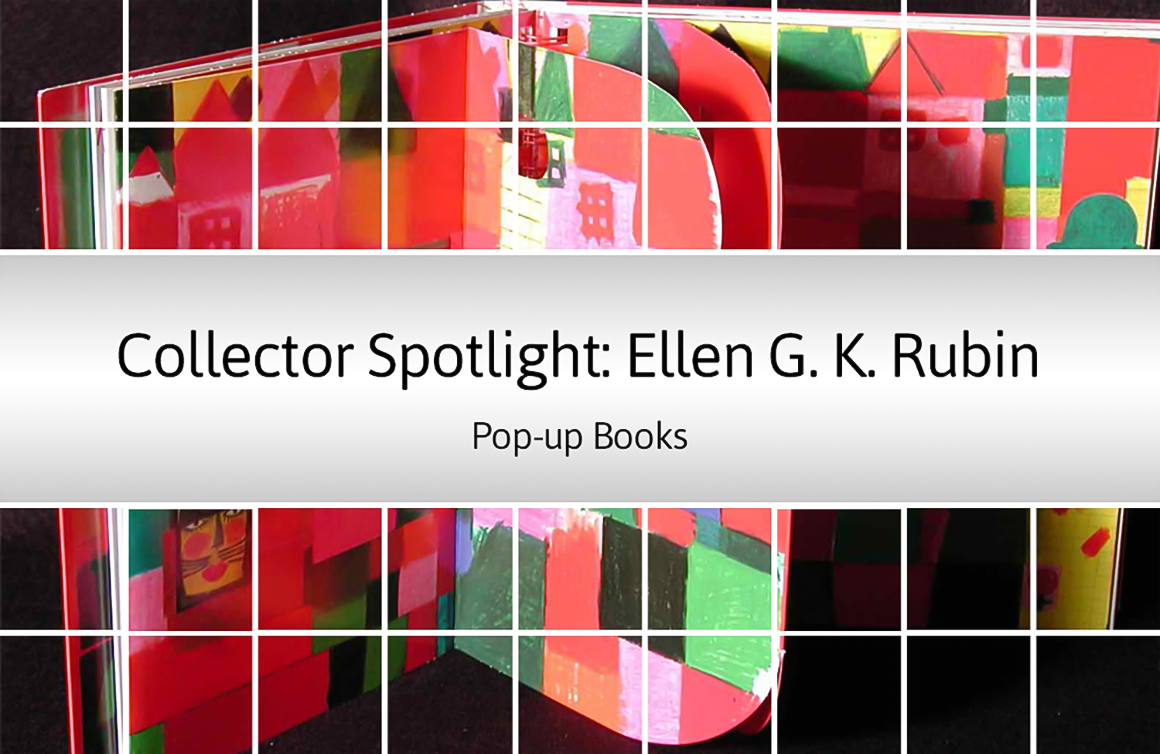Describe your collection.
I have over 9,000 pop-up books along with 25 five-inch binders containing thousands of pop-up ephemera. It’s a collection of mostly paper objects that need to be manipulated by the reader to understand what the author is trying to convey. There are 41 languages, including sign language and braille, represented in my collection.
The focus of my work is to tell the story and history of pop-ups. My collection of books and ephemera also includes original artwork by paper engineers. Robert Sabuda, a highly accomplished paper engineer, says that pop-ups are the step-children of publishing. I like to refer to them in the immortal words of Rodney Dangerfield, “They don’t get no respect.”
How long have you collected pop-ups? Why did you start collecting?
I didn’t own a pop-up book as a child. It wasn’t until the early 1980s that I bought two pop-up books for my young sons. They were published by Random House and were the first pop-up books I ever saw. I became excited by their interactivity and appreciated the collaboration between writer, illustrator, paper engineer, and reader. I had a friend who collected books, and she suggested I start collecting pop-ups; that way we could go book hunting together. My fascination grew from there. I went to a pop-up book exhibit at Yale in the 1980s called Eccentric Books while I attended Yale School of Medicine. That exhibit included a book from the 16th Century and informed me about the history of pop-ups; they didn’t originate in the 1970s! I became a charter member of the Movable Book Society in 1993.
How do you display and store your collection?
I took over my son’s bedroom when he moved out. I have open glass shelving, drawers, and closets. The shelves are numbered and reflected in my cataloging system so I can easily find a specific book.
I don’t use gloves to handle items. Did you know that librarians no longer wear gloves to handle historic paper-based items either? They aren’t as concerned about oils from the hands as they are about lint from the gloves and issues flipping pages with ease or an item slipping out of someone hands because of the gloves.
What do you consider to be the Holy Grail of Pop-ups?
The Astronomicum Cæsareum created by Petrus Apianus (Peter Apian) in 1540. I think most pop-up book collectors and historians would agree. Apianus was an astronomist and mathematician commissioned by Emperor Charles V to create the book. The folio-sized book was hand-coloured and contained 35 volvelles of planets and moons. For his work, Apianus was given a substantial sum of money and made a professor at a prestigious university. We think there were only about 1,400 copies published. I came across one for sale a number of years ago for $35,000. It’s worth over a million dollars now. The New York Public Library has a copy if you’re interested in seeing it in person.
What advice would you give to someone who is interested in starting a pop-up book collection?
I think it’s the same for any type of collection: buy what you love. I started with science- and medicine-related pop-ups but my collection expanded as my appreciation for mechanics and artwork grew.
What resources do you use to acquire knowledge about pop-up books and connect with other collectors?
When I first started, I relied on published articles and their source materials. I would often contact writers to learn more. Things have opened up more with the internet. I can now find academic papers and materials from museums and libraries.
Learn more about the history of pop-ups through Rubin’s talk at The Smithsonian. Visit her website to learn more about her collection and work.
Drop us a line to let us know about your collection of vintage toys and/or games. We just may feature your collection!

